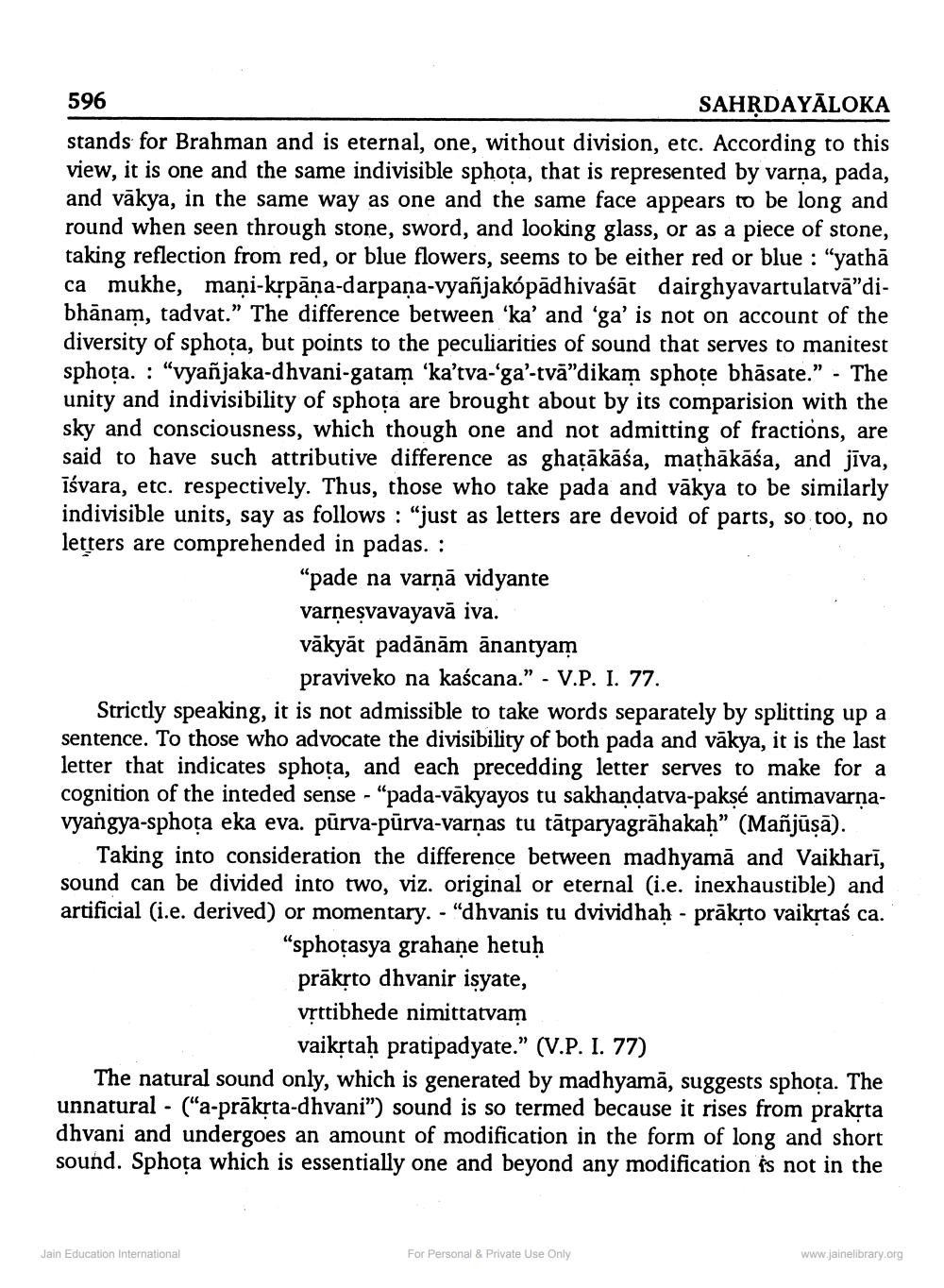________________
596
SAHRDAYĀLOKA
stands for Brahman and is eternal, one, without division, etc. According to this view, it is one and the same indivisible sphota, that is represented by varņa, pada, and vākya, in the same way as one and the same face appears to be long and round when seen through stone, sword, and looking glass, or as a piece of stone, taking reflection from red, or blue flowers, seems to be either red or blue : “yathā ca mukhe, maņi-krpāņa-darpaņa-vyañjakópādhivaśāt dairghyavartulatvā”dibhānam, tadvat.” The difference between 'ka' and 'ga' is not on account of the diversity of sphoța, but points to the peculiarities of sound that serves to manitest sphoța. : "vyañjaka-dhvani-gatam 'ka'tva-'ga'-tvā”dikam sphote bhāsate.” - The unity and indivisibility of sphoța are brought about by its comparision with the sky and consciousness, which though one and not admitting of fractions, are said to have such attributive difference as ghatākāśa, mathākāśa, and jīva, iśvara, etc. respectively. Thus, those who take pada and vākya to be similarly indivisible units, say as follows : "just as letters are devoid of parts, so too, no letters are comprehended in padas. :
“pade na varņā vidyante varņeșvavayavā iva. vākyāt padānām ānantyam
praviveko na kaścana." - V.P. I. 77. Strictly speaking, it is not admissible to take words separately by splitting up a sentence. To those who advocate the divisibility of both pada and vākya, it is the last letter that indicates sphoța, and each precedding letter serves to make for a cognition of the inteded sense - "pada-vākyayos tu sakhandatva-pakṣé antimavarnavyangya-sphoța eka eva. pūrva-pūrva-varņas tu tātparyagrāhakaḥ” (Mañjūsā).
Taking into consideration the difference between madhyamā and Vaikharī, sound can be divided into two, viz. original or eternal (i.e. inexhaustible) and artificial (i.e. derived) or momentary. - "dhvanis tu dvividhah - prāksto vaikstaś ca.
"sphoțasya grahane hetuḥ
prāksto dhvanir isyate, vịttibhede nimittatvam
vaikstaḥ pratipadyate.” (V.P. I. 77) The natural sound only, which is generated by madhyamă, suggests sphoța. The unnatural - ("a-prāksta-dhvani") sound is so termed because it rises from prakrta dhvani and undergoes an amount of modification in the form of long and short sound. Sphoța which is essentially one and beyond any modification is not in the
Jain Education International
For Personal & Private Use Only
www.jainelibrary.org




